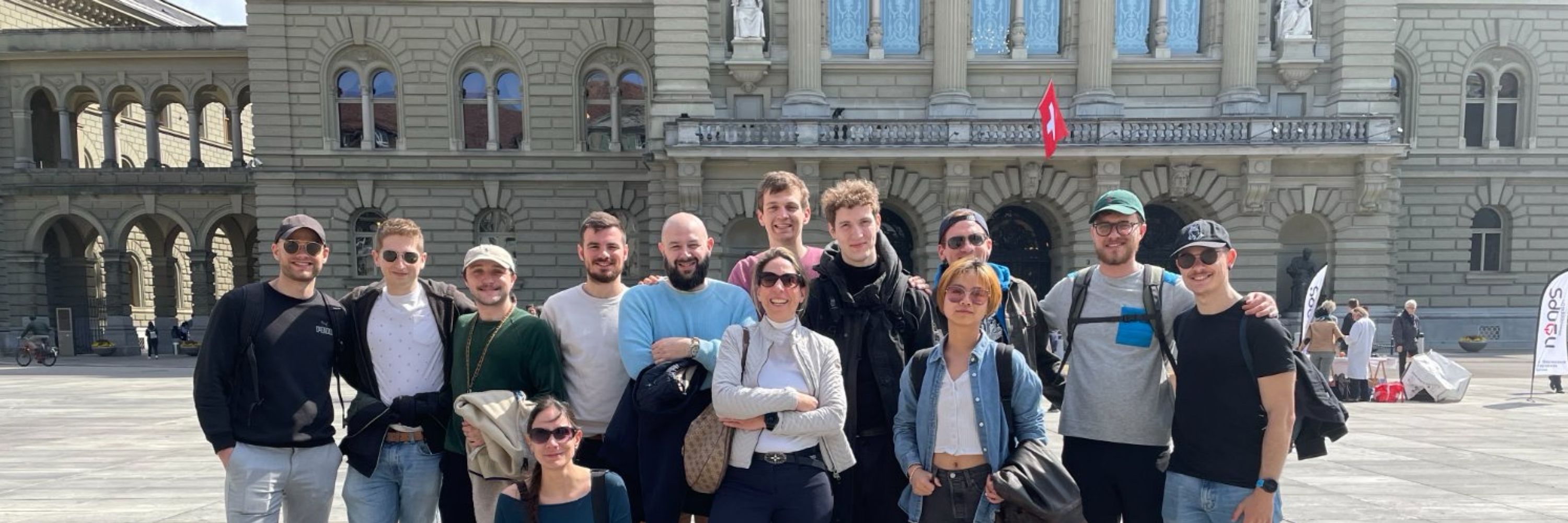

🥁That’s what the committee said about this #SIBRemarkableOutputs 2024
👉Discover the output: tinyurl.com/53arz2rz
@iberd.bsky.social
🥁That’s what the committee said about this #SIBRemarkableOutputs 2024
👉Discover the output: tinyurl.com/53arz2rz
@iberd.bsky.social
We hope this serves as a generalizable reference for simulating collective cell behavior and pattern formation.
arxiv.org/pdf/2509.08930
We hope this serves as a generalizable reference for simulating collective cell behavior and pattern formation.
arxiv.org/pdf/2509.08930
That previous paper focused on the biological questions and mathematical framework.
Here, we focus on the practical COMSOL #PIDE implementation: setup, BCs, 1D–3D, and Lagrangian reformulation for growth.
Let’s explore a powerful and underappreciated mechanism: Directed Cell Migration (DCM).
Preprint @biorxivpreprint.bsky.social : doi.org/10.1101/2025...
👇Thread 🧵(1/11)
That previous paper focused on the biological questions and mathematical framework.
Here, we focus on the practical COMSOL #PIDE implementation: setup, BCs, 1D–3D, and Lagrangian reformulation for growth.
🎯 Useful for: developmental biology, tissue engineering, pattern formation, and computational modeling
#DevBio #PatternFormation #CellMigration #Morphogenesis #ComputationalBiology

🎯 Useful for: developmental biology, tissue engineering, pattern formation, and computational modeling
#DevBio #PatternFormation #CellMigration #Morphogenesis #ComputationalBiology
• #DCM is a rapid, robust mechanism for developmental pattern formation
• COMSOL FEM implementation makes DCM models numerically accessible
• #DCM patterning parameter ranges and timeframes
• Pattern Orientation via attraction anisotropy or directed tissue growth
👇Thread 🧵(10/11)
Spatially varying cell attraction that changes with tissue growth can guide migrating cells, leading to precise large-scale patterning.
This mimics how tissues form rings, bands, or layered structures in vivo.
👇Thread 🧵(9/11)

Spatially varying cell attraction that changes with tissue growth can guide migrating cells, leading to precise large-scale patterning.
This mimics how tissues form rings, bands, or layered structures in vivo.
👇Thread 🧵(9/11)
1. #Anisotropic #attraction
Cells pulling or migrating more strongly in one direction form aligned stripe-like patterns—e.g., during directional tissue growth.
👇Thread 🧵(8/11)

1. #Anisotropic #attraction
Cells pulling or migrating more strongly in one direction form aligned stripe-like patterns—e.g., during directional tissue growth.
👇Thread 🧵(8/11)
But biological tissues often require oriented patterns to fulfill specific functions.
Can DCM produce stripes, too?
👇Thread 🧵(7/11)

But biological tissues often require oriented patterns to fulfill specific functions.
Can DCM produce stripes, too?
👇Thread 🧵(7/11)
• Initial density of motile cells
• Intercellular attraction strength
• Cell sensing radius
👇Thread 🧵(6/11)

• Initial density of motile cells
• Intercellular attraction strength
• Cell sensing radius
👇Thread 🧵(6/11)
We show under which conditions #DCM can realistically pattern tissues in development.
👇Thread 🧵(5/11)
We show under which conditions #DCM can realistically pattern tissues in development.
👇Thread 🧵(5/11)
👉 1D, 2D, 3D
👉 arbitrary geometries & boundary conditions
👉 isotropic & anisotropic interactions
👉 fast, large-scale simulations
🧵(4/11)

#DCM offers a particularly fast and versatile route to spontaneously symmetry breaks and pattern formation without tissue buckling.
🧵(2/11)

#DCM offers a particularly fast and versatile route to spontaneously symmetry breaks and pattern formation without tissue buckling.
🧵(2/11)
Dimension: 3D
Software language: C++
Download: git.bsse.ethz.ch/iber/Publica...
bsky.app/profile/epim...

Dimension: 3D
Software language: C++
Download: git.bsse.ethz.ch/iber/Publica...
bsky.app/profile/epim...
Code & details: git.bsse.ethz.ch/iber/Publica...
Retweet 🔄 if you’d use this for your inverse problems! #OpenScience

Code & details: git.bsse.ethz.ch/iber/Publica...
Retweet 🔄 if you’d use this for your inverse problems! #OpenScience
Classical PINNs stall. PINNverse keeps improving physics loss ∼ epoch^(-1.4) for Fisher’s equation.
Algebraic decay >> stagnation!

Classical PINNs stall. PINNverse keeps improving physics loss ∼ epoch^(-1.4) for Fisher’s equation.
Algebraic decay >> stagnation!



